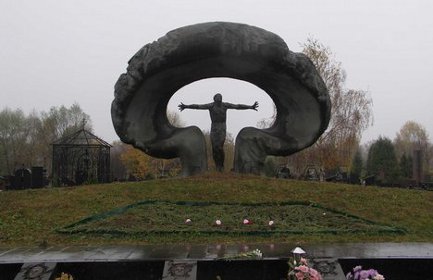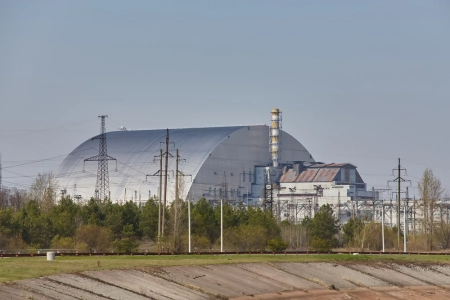
The Chernobyl nuclear disaster in 1986 stands out as the worst nuclear accident in history, classified as level 7 on the INES Scale, the highest level for serious nuclear accidents. Although the Fukushima accident was also categorized as level 7, the consequences of Chernobyl were much more devastating.
The Chernobyl nuclear plant is located near the city of Pripyat, about 18 km north of Chernobyl, Ukraine. Although the accident occurred in 1986, it should be noted that in 1982 there was a partial meltdown in reactor number 1 of the plant, although this incident was not reported to the international community until 1985.
At the time of the disaster, the plant had four operational reactors, with two additional ones under construction. The main accident affected reactor number 4, but, despite its severity, reactors 1, 2 and 3 continued to operate due to power demands.
Development of the accident
The Chernobyl disaster originates during a test at the atomic power plant. The succession of technical errors by the personnel in charge of developing the test caused a spectacular atomic explosion.
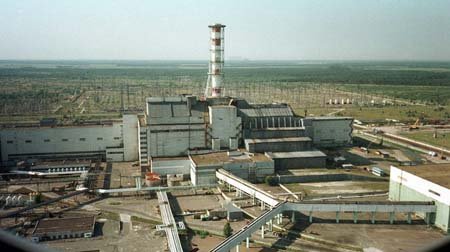 The disaster occurred during the night of April 25-26, 1986 in the plant's fourth reactor. It was a reactor that belonged to the type that the Soviets call RBMK-1000, cooled by water and moderated by graphite.
The disaster occurred during the night of April 25-26, 1986 in the plant's fourth reactor. It was a reactor that belonged to the type that the Soviets call RBMK-1000, cooled by water and moderated by graphite.
A huge amount of radioactive particles were released into the atmosphere, triggering radioactivity levels, especially in the city of Pripyat, located 18 kilometers from the explosion.
Origin of the accident: safety test
The origin was a test at the plant scheduled from Moscow for April 25.
This test was intended to increase the safety of the reactor to find out how long the steam turbine would continue to generate electrical power once the steam flow was cut off.
In the event of a breakdown, the emergency coolant pumps required a minimum of power to start (until the diesel generators were started). The plant technicians did not know if, once the flow of steam was cut off, the inertia of the steam turbine could keep the pumps running.
Start of security test
One in the early morning of April 25. The engineers began entering the control rods into the reactor core. The objective was to reduce its power.
First problems
By 11 p.m. the monitors had been adjusted to the lowest power levels. But the operator forgot to reprogram the computer so that the power was maintained between 700 electrical megawatts and 1,000 thermal megawatts. For this reason, the power dropped to the level of 30 MW.
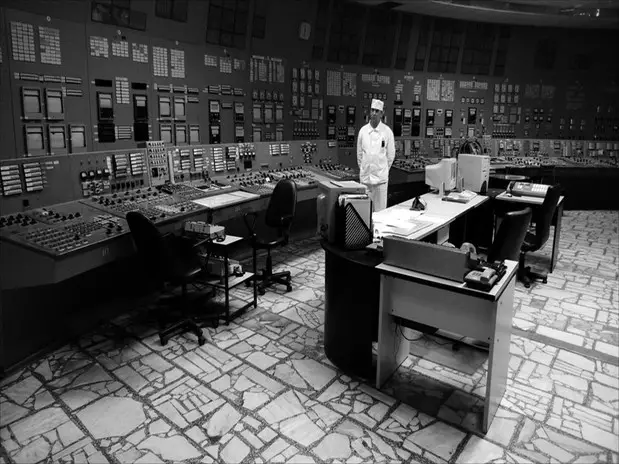 At such a low power level, automatic systems can stop the reactor. It is considered a dangerous situation. Precisely for this reason, the operators disconnected the protection system when the system was already about to shut down the reactor. Among them, the power regulation system and the emergency system that cools the core.
At such a low power level, automatic systems can stop the reactor. It is considered a dangerous situation. Precisely for this reason, the operators disconnected the protection system when the system was already about to shut down the reactor. Among them, the power regulation system and the emergency system that cools the core.
Control rod removal
At 30 MW, xenon poisoning begins to occur in the reactor core.
Upon realizing this, the control rods were extracted in order to avoid this by increasing the power of the reactor. However, operators manually removed too many control rods.
The reactor core had 170 control rods. Safety rules required that there always be a minimum of 30 lowered bars, but on this occasion they left only 8.
The plant's reactor was left in unstable operating conditions because the plant's safety systems were disabled. Additionally, almost all of the control rods had been removed.
Sudden power increase
At that moment, a sharp increase in power took place. The operators did not detect it in time. They tried to lower the control bars again using the emergency SCRAM button, but they did not respond. The most likely reason is that they were possibly already deformed by heat.
A SCRAM is the emergency shutdown of a nuclear reactor. In modern nuclear plants, the term reactor trip is used.
Reactor explosion
Finally, the nuclear fuel disintegrated and came out of the pods, coming into contact with the water used to cool the reactor core.
At 1:23AM, a large explosion occurred. A few seconds later, a second explosion blew up the reactor slab and the concrete walls of the reactor room.
Release of radioactive material
The explosion sent fragments of graphite and nuclear fuel out of the plant. Radioactive dust rose through the atmosphere with very high radiation levels.
It is estimated that the amount of radioactive material released was 200 times greater than that of the atomic bombs dropped on Hiroshima and Nagasaki at the end of World War II.
Accident classification
The accident was classified as level 7 on the INES Scale. This is the highest possible level, that is, the accident with the worst environmental consequences.
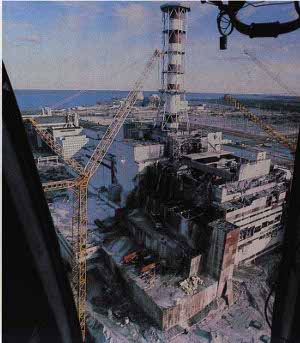
Summary of the causes of the Chernobyl accident
The Chernobyl accident in 1986 was caused primarily by a series of factors that converged in a catastrophic manner.
-
First, the RBMK-1000 reactor had an inherently unstable design, especially at low powers, making it prone to dangerous situations.
-
Second, during a safety test, plant personnel made gross human errors by extrapolating too many reactor control rods and failing to properly communicate problems to higher authorities.
-
Third, the culture of secrecy and lack of transparency in the Soviet Union limited the ability to learn from previous accidents and to share crucial nuclear safety information.
These factors, combined with a lack of adequate training, disabling safety systems, and inadequate test design, created a perfect storm that culminated in an explosion at Chernobyl's No. 4 reactor.
Consequences of the disaster
The consequences of the accident included the evacuation of 350,000 people in an area of 155,000 square kilometers, with extensive areas uninhabited for years.
The radiation spread across Europe, but did not cross the Pyrenees. There was a high rate of radioactivity in some areas, and local people fear the long-term consequences of the radiation.
Subsequent studies have reported different casualty figures, but it is undeniable that the accident had a devastating impact on health and the environment.
The lack of reliable information and regulation at the time contributed to the tragedies related to Chernobyl.
Chernobyl accident summary
The Chernobyl accident was a nuclear disaster that occurred on April 26, 1986 at the Chernobyl nuclear plant, located near the city of Pripyat, in the then Soviet Union (now Ukraine).
Below is a summary of the key events of the disaster:
Reactor explosion
During a safety experiment at the plant's No. 4 reactor, a series of human and technical errors occurred that led to a power overload and the rupture of the reactor's cooling channels.
The Chernobyl accident is considered one of the worst nuclear disasters in history and had a lasting impact on public perception of nuclear energy and nuclear safety policies around the world.
Explosion and radiation release
The resulting explosion released a large amount of radiation into the environment, releasing radioactive material into the atmosphere. The reactor was exposed, causing a fire that emitted large amounts of radioactive particles.
Evacuation
To avoid radiation exposure, thousands of people were evacuated from nearby cities, including Pripyat. This evacuation was carried out quickly, but many people suffered radiation exposure during the evacuation.
Containment
To contain the radiation, a concrete sarcophagus, known as the "Chernobyl sarcophagus", was built over the damaged reactor in the months after the accident.
Consequences
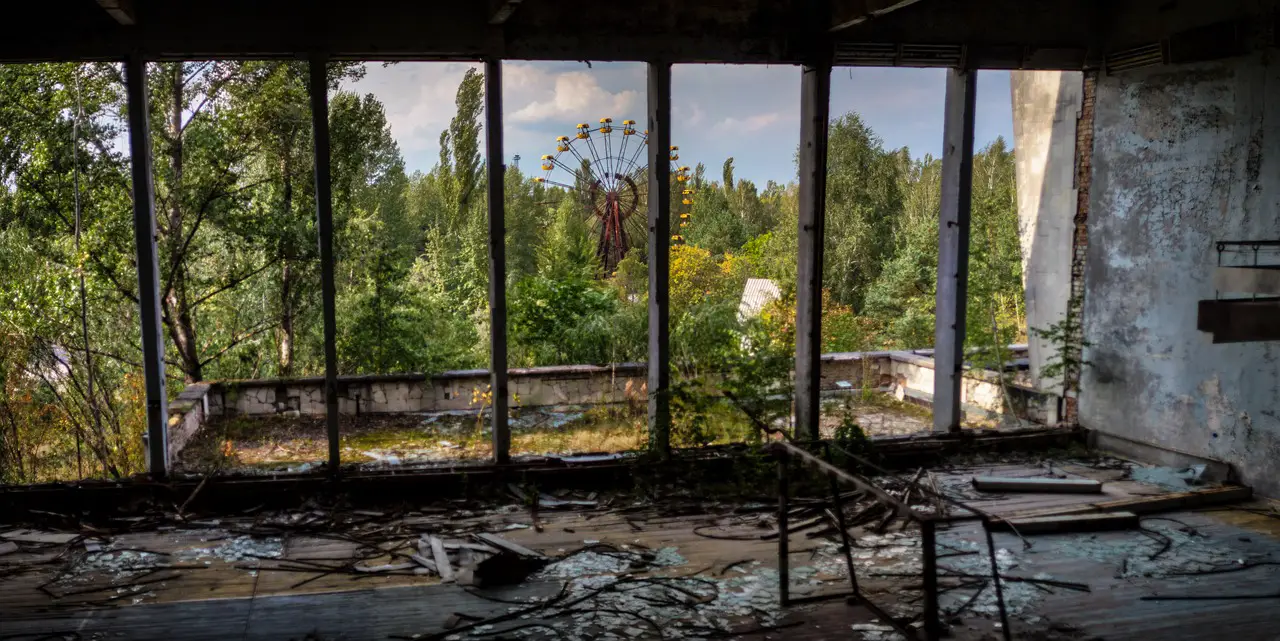 The Chernobyl accident resulted in the immediate death of two plant workers and caused severe illness and long-term deaths due to radiation exposure in the local population. In addition, radioactive contaminations occurred over a wide area, resulting in devastating environmental effects and the need for long-term evacuation.
The Chernobyl accident resulted in the immediate death of two plant workers and caused severe illness and long-term deaths due to radiation exposure in the local population. In addition, radioactive contaminations occurred over a wide area, resulting in devastating environmental effects and the need for long-term evacuation.
International impact
Radiation spread across Europe, and precautionary measures were implemented in many countries to avoid radiation exposure. International efforts were made to help mitigate the disaster and improve nuclear safety around the world.
